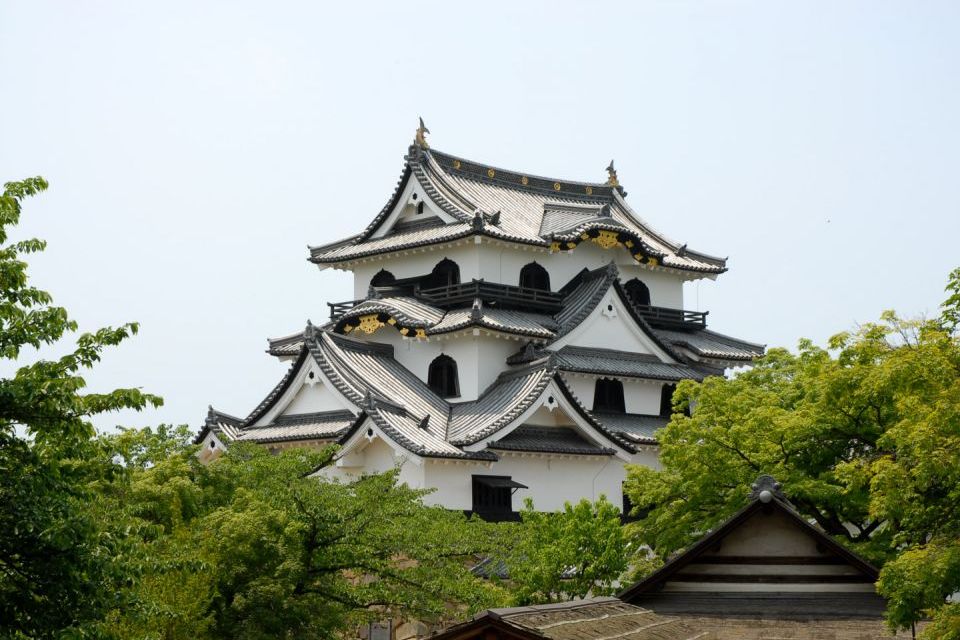Hikone Castle
After the battle of Sekigahara and the defeat of Mitsunari, Sawayama Castle was attacked and Mitsunari’s father and wife died or committed suicide. Ii Naomasa was rewarded for his valour by appointment to the agriculturally rich domain of Ōmi and he took over Sawayama Castle. Naomasa hated the fact that it was the base of Mitsunari, who was still popular in Ōmi, and he planned to build his own castle close to Lake Biwa, but he soon died of his injuries from Sekigahara. His successor Ii Naotsugu was a young child, and so Naomasa’s chief retainer consulted with Tokugawa Ieyasu to fulfil Naomasa’s wish. In 1603, the construction of Hikone Castle began on Mt. Hikone facing Lake Biwa.
To hasten its construction, timbers from nearby Otsu Castle and Nagahama Castle, and stones from Sawayama Castle were used. At that time, it was very close to Lake Biwa, whose waters were used for its extensive system of moats. It was completed in 1622.
The Ii clan continued to prosper, reaching a very high status in the Tokugawa shogunate. But under the peaceful rule of the Tokugawa, there was no reason for the existence of a military facility such as a castle, and it was used differently from its original purpose. Hikone Castle was an important military base of the Tokugawa Shogunate as a restraint on the western feudal lords, but its main function was as a political centre and for storage of tax in the form of rice. The castle tower and turrets were only used as warehouses.
When feudalism ended with the restoration of the Emperor in the Meiji period, many of Japan’s castles were dismantled to ensure the security of the new government. Hikone Castle was also scheduled for destruction, but it was saved through the intervention of Emperor Meiji’s advisors.
Location
place 1-1 Konki-cho, Hikone, Shiga prefecture
Hikone Castle
Pronunciation: Hikonejō
- schedule
- 8:30 - 17:00
Open all year round - attach_money
- Adult 800 yen / Children 200 yen
- smoke_free
- No Smoking
- phone
- 0749-22-2742

